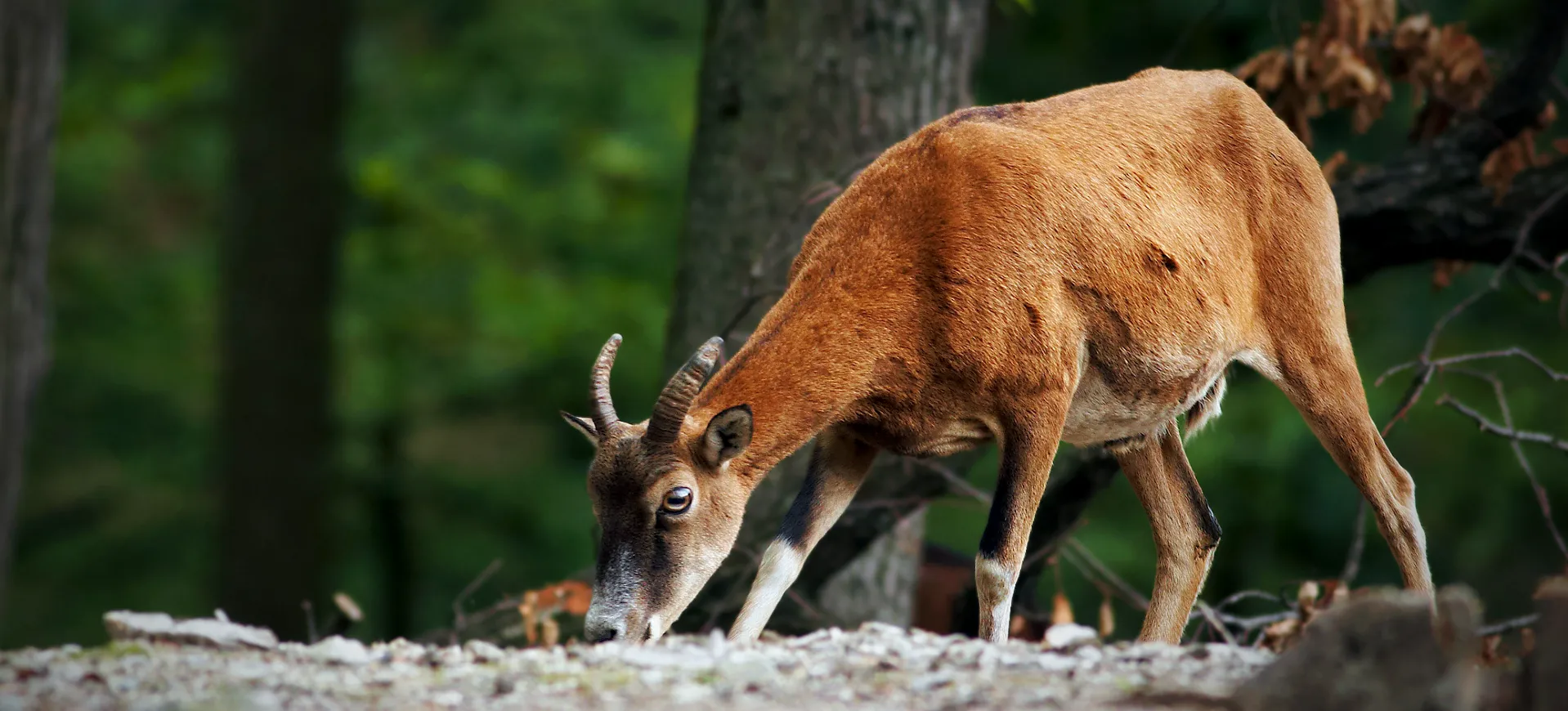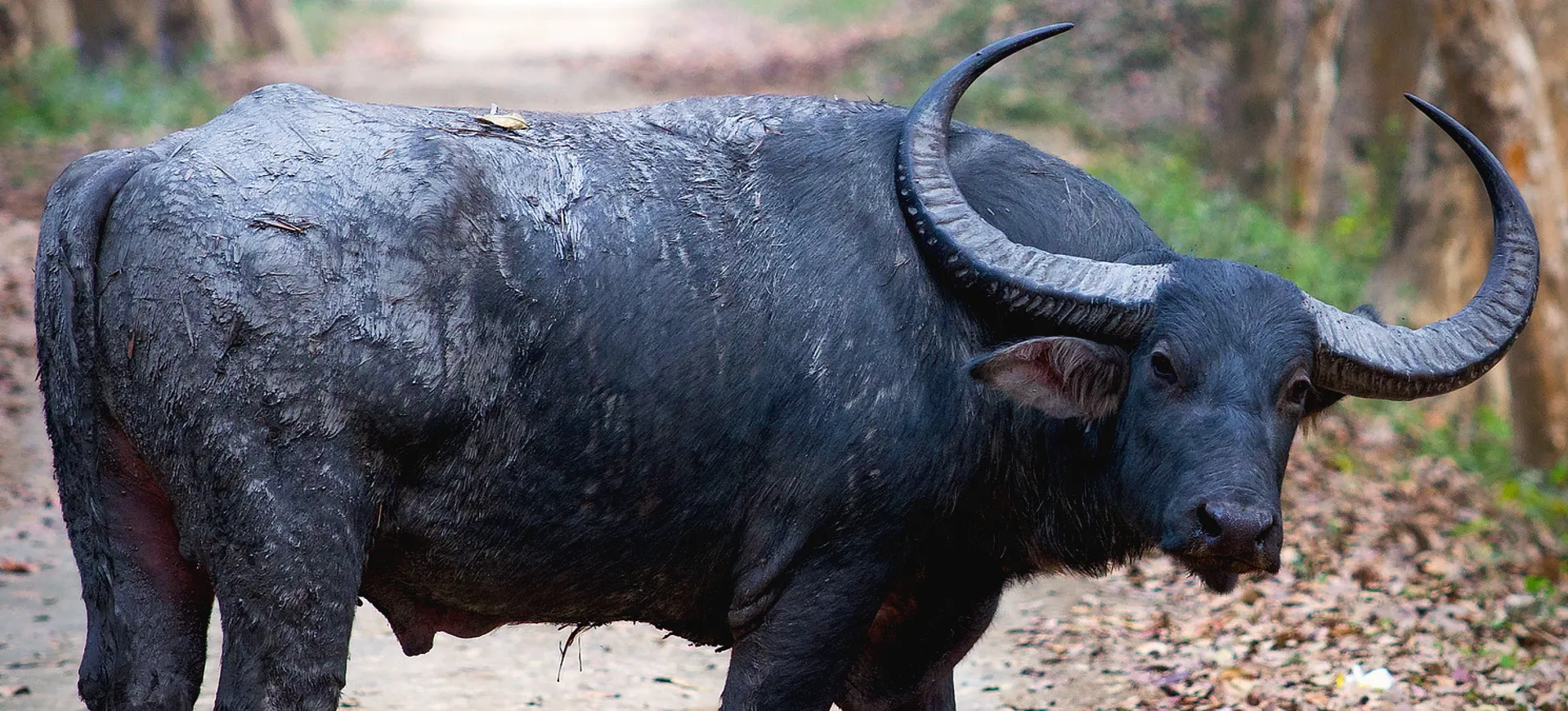Overview
The Sitatunga is an elusive antelope species native to the swamps, marshes, and wetlands of Central Africa. Scientifically known as Tragelaphus spekii, this antelope is well-adapted to its semi-aquatic lifestyle, featuring elongated, splayed hooves that enable it to walk on swampy ground without sinking. The Sitatunga is a highly specialized species, with its entire physiology and behavior adapted to life in wetlands.
Males and females exhibit sexual dimorphism, with males being larger and possessing twisted horns that can grow up to 45 inches. The fur of the Sitatunga is water-resistant, and its color varies from reddish-brown to dark brown, often with white markings on the body. These markings serve as camouflage, helping the animal blend into its natural surroundings.
Sitatungas are generally shy and reclusive, making them difficult to spot in the wild. They are primarily nocturnal, although they can be active during the day in undisturbed areas. The species is known for its excellent swimming abilities, often taking to water to escape predators like leopards and crocodiles.
Taxonomy
Kingdom
Phylum
Class
Order
Family
Genus
Species
Type
Physical Description:
The Sitatunga has a robust body covered in water-resistant fur that ranges from reddish-brown to dark brown. Males are generally larger than females and possess long, twisted horns. Both sexes have a series of white stripes and spots on their bodies, which serve as camouflage in their natural habitat. The animal’s elongated, splayed hooves are a unique adaptation to its swampy environment, allowing it to walk on soft ground without sinking.
Males have a more robust build than females and are easily distinguishable by their horns, which can grow up to 45 inches. The eyes and ears of the Sitatunga are positioned high on the head, an adaptation that allows them to remain alert while submerged in water. The tail is relatively short, and the animal often flicks it to communicate with other members of its group.

Lifespan: Wild: ~12 years || Captivity: ~20 years

Weight: Male: 187–276 lbs (85–125 kg) || Female: 121–154 lbs (55–70 kg)

Length: Male: 66–72 in (170–185 cm) || Female: 59–66 in (150–170 cm)

Height: Male: 35–43 in (90–110 cm) || Female: 31–35 in (80–90 cm)

Top Speed: 20 mph (32 km/h)
Characteristic:
Native Habitat:
The Sitatunga is native to the wetlands, marshes, and swamps of Central Africa. These habitats offer the animal both food and protection, as the dense vegetation provides ample cover from predators. The water bodies in these areas are rich in the plant materials that comprise the bulk of the Sitatunga’s diet.
The species is highly specialized for life in wetlands, and its distribution is closely tied to the availability of these habitats. Sitatungas are not found in dry areas and are highly dependent on the presence of water bodies. They are known to inhabit both natural and man-made wetlands, including those that are seasonally flooded.
Climate Zones:
Biomes:
WWF Biomes:
Biogeographical Realms:
Continents:
Diet:
Diet & Feeding Habits:
Sitatungas are primarily browsers, feeding on various plant materials such as leaves, shoots, and fruits. They prefer the soft, new growth of reeds and sedges found in their wetland habitats. Their diet is high in water content, reducing their need to drink water frequently.
They feed during the early morning and late afternoon, avoiding the day’s heat. Sitatungas use their keen sense of smell to locate food and are selective feeders, choosing the most nutritious plant parts. They also consume aquatic plants, an adaptation to their semi-aquatic lifestyle.
Mating Behavior:
Mating Description:
Sitatungas have a polygynous mating system, where a single dominant male mates with multiple females. The male establishes a territory, which he defends from rival males. During the mating season, males engage in displays and fights to establish dominance and win the right to mate with females.
Females enter estrus yearly and signal their readiness to mate through vocalizations and scent markings. After mating, the female has a gestation period of about eight months, after which she gives birth to a single calf. The calf is usually born in a secluded area and remains hidden for several weeks before joining the mother.
Reproduction Season:
Birth Type:
Pregnancy Duration:
Female Name:
Male Name:
Baby Name:
Social Structure Description:
Sitatungas are social animals that live in small groups, usually consisting of one dominant male and several females. The dominant male is responsible for defending the territory and the group from predators and rival males. Social bonds within the group are strong, and individuals engage in mutual grooming to strengthen these bonds.
Despite their social nature, Sitatungas are not particularly aggressive, and conflicts within the group are rare. They communicate through various vocalizations, which serve different functions, such as alerting the group to danger or signaling submission. The social structure is relatively flexible, and group composition can change over time.
Groups:
Conservation Status:
Population Trend:
The Sitatunga is currently listed as Least Concern by the IUCN, although exact population numbers are not known due to the species’ elusive nature. In protected areas where their habitat is preserved, populations are generally stable. They are not considered at immediate risk, but localized declines have been noted.
Human activities such as agriculture and settlement lead to habitat loss, the primary threat to the Sitatunga. In some regions, they are also hunted for their meat and hides, although this is not considered a major threat at the population level. Conservation efforts are focused on habitat preservation and sustainable management.
Population Threats:
Habitat loss due to agricultural expansion and human settlement is the situation’s primary threat. Drainage of wetlands for agriculture and the construction of dams has led to a reduction in suitable habitats. In some areas, they are also hunted for their meat and hides, although this is generally on a small scale.
In addition to habitat loss, Sitatungas are at risk from diseases domestic livestock transmit. These diseases can significantly impact wild populations, especially in areas where wildlife and livestock come into close contact. Conservation efforts are needed to mitigate these threats and preserve the species’ natural habitat.
Conservation Efforts:
Conservation efforts for the Sitatunga are primarily focused on habitat preservation. Protected areas such as national parks and reserves offer the best chance for the species’ survival. In these areas, sustainable management practices are being implemented to preserve the wetland habitats that the Sitatunga relies on.
Community-based conservation efforts are also being undertaken in some regions. These initiatives aim to involve local communities in the conservation process, providing them with the tools and knowledge to manage their natural resources sustainably. Education and awareness-raising are key components of these efforts.
Additional Resources:
Fun Facts
- Sitatungas are excellent swimmers and can remain submerged for several minutes.
- They have specialized hooves adapted for walking on soft, swampy ground.
- Sitatungas are one of the few antelope species adapted to a semi-aquatic lifestyle.
- Males have twisted horns that can grow up to 45 inches in length.
- They are primarily nocturnal but can be active during the day in undisturbed areas.
- Sitatungas have a keen sense of smell, which they use to locate food.
- They are selective feeders, choosing the most nutritious plant parts.
- Sitatungas consume aquatic plants, an adaptation to their wetland habitat.
- They have a polygynous mating system, with one dominant male mating with multiple females.
- The Sitatunga’s eyes and ears are positioned high on the head, allowing it to remain alert while partially submerged.
















































































